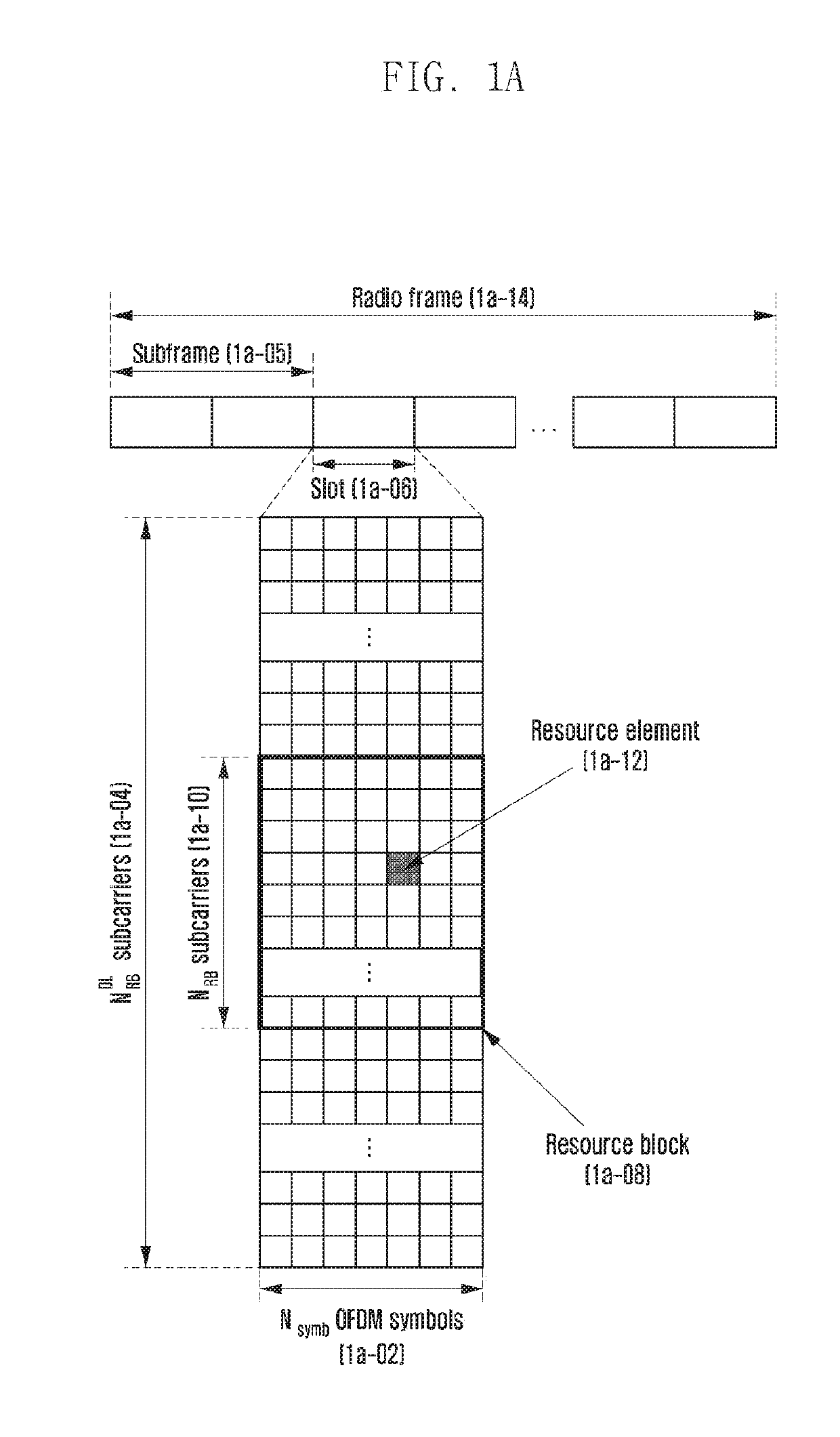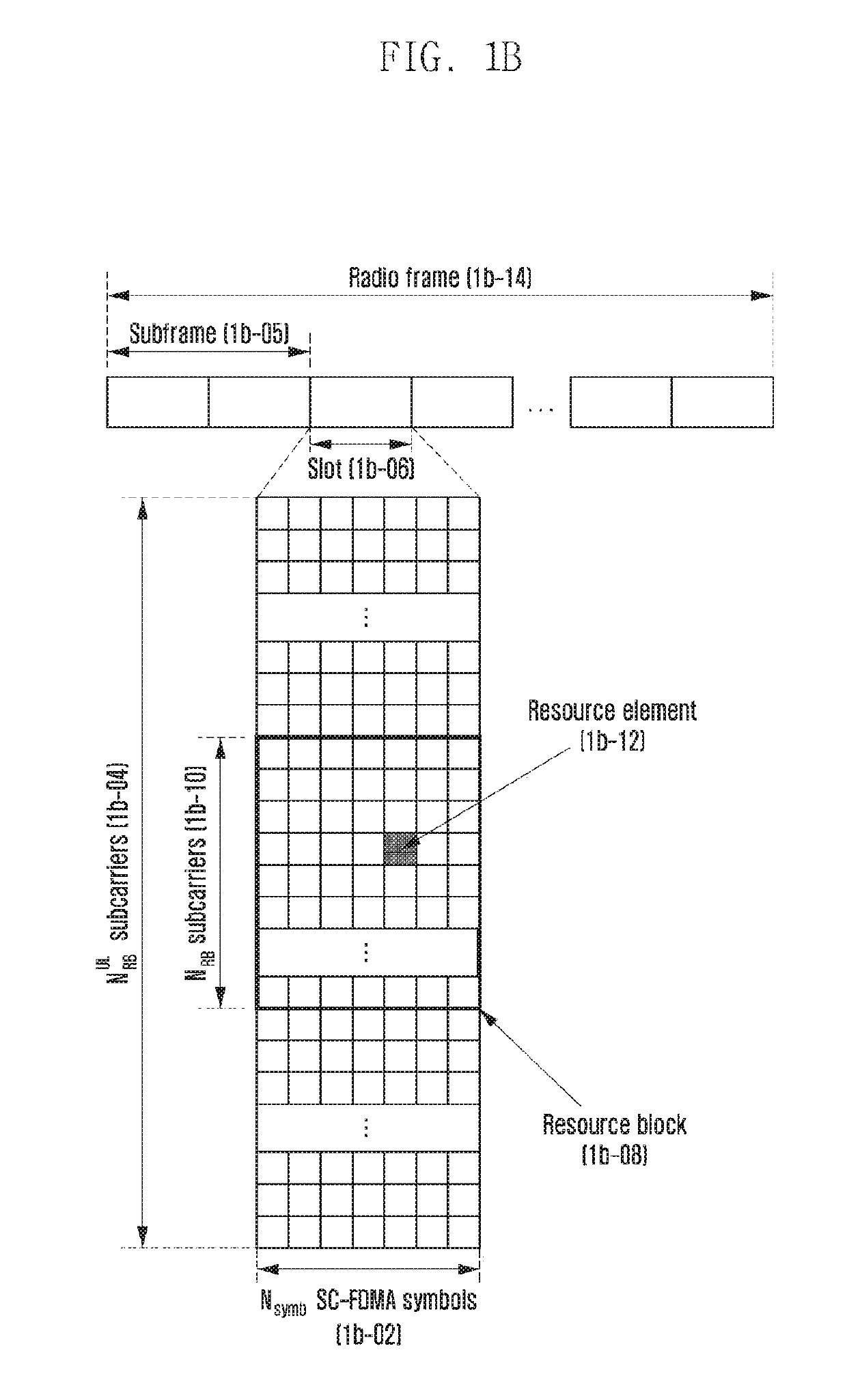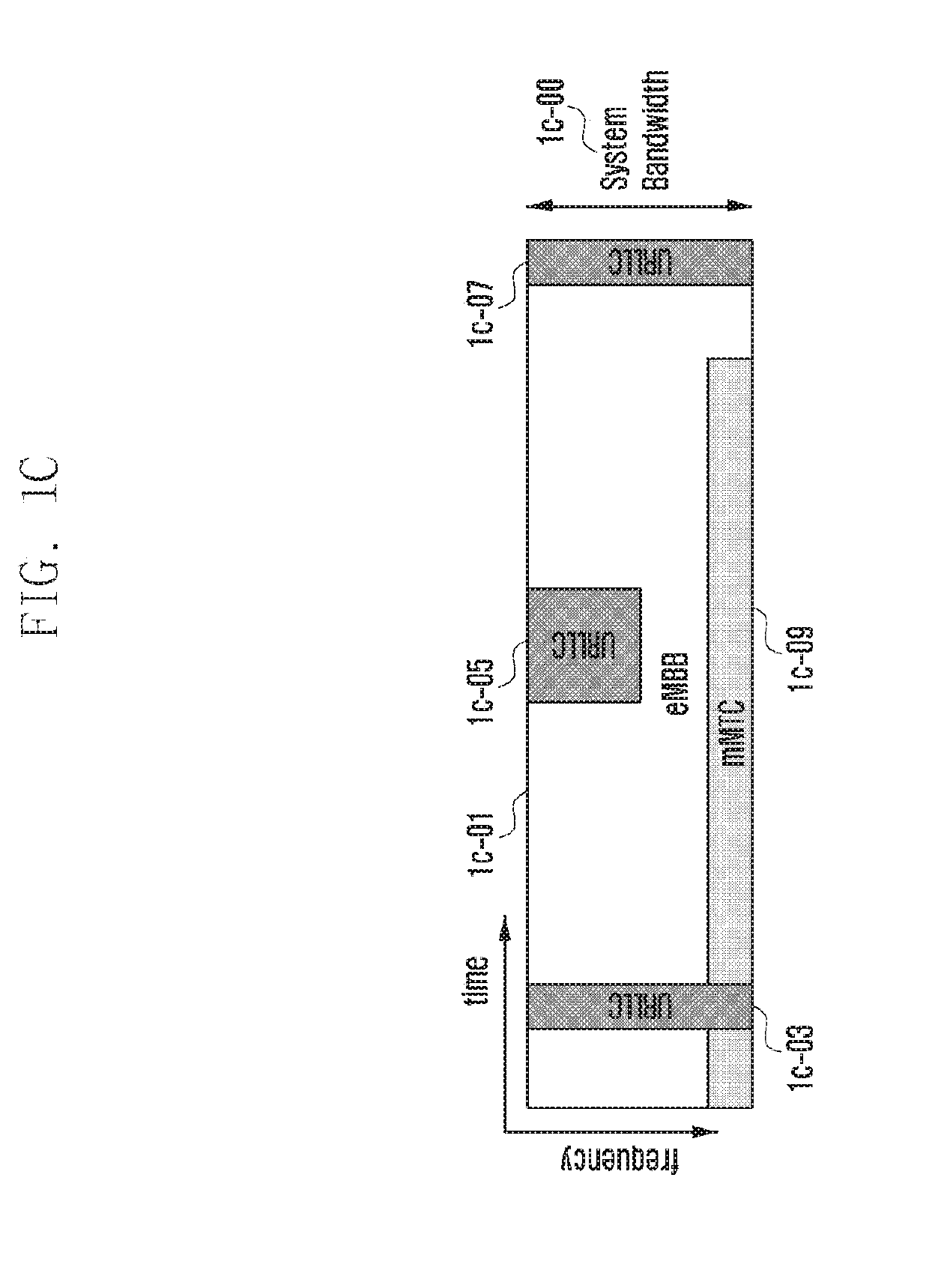Method and device for transmitting data in wireless cellular communication system
a wireless cellular communication and data transmission technology, applied in the field of wireless communication systems, can solve problems such as retransmission of the whole tb, and achieve the effect of facilitating the transmission operation of a base station and reducing unnecessary data transmission
- Summary
- Abstract
- Description
- Claims
- Application Information
AI Technical Summary
Benefits of technology
Problems solved by technology
Method used
Image
Examples
embodiment 1
[0126]Embodiment 1 is directed to a method for splitting a TB into multiple CBs in such a way of splitting the TB into multiple sub-TBs and then splitting each sub-TB into multiple CBs.
[0127]FIG. 1H is a diagram illustrating a method for splitting a TB into M sub-TBs as denoted by reference number 1h-01 and splitting each sub-TB into one or more CBs as denoted by reference number 1h-05. Reference number 1h-11 denotes a TB delivered from a higher layer to a physical layer. The physical layer regards the TB 1h-11 as data.
[0128]A CRC 1h-13 may be added to the TB. The CRC 1h-13 may be generated with the TB 1h-11 and a cyclic generator polynomial, which may be defined in various manners. For example, assuming that the cyclic generator polynomial is gCRC24A(D)=D24+D23+D18+D17+D14+D11+D10+D7+D6+D5+D4+D3+D+1 for a 24-bit CRC, if L=24, it may be possible to determine a0DA+23+a1DA+22+ . . . +aA−1D24+p0D23+p1D22+ . . . +p22D1+p23 divisible by gCRC24A(D) with the remainder 0 as CRCs CRC p0, p1,...
embodiment 1-1
[0131]Embodiment 1-1 is directed to a method for determining a number of sub-TBs and transmitting the information of M to a terminal in embodiment 1.
[0132]Considering M sub-TBs constituting a TB, the number of sub-TBs M may be determined and notified to the base station or UE in various manners. For example, it may be possible to determine M 1) by splitting a TB by the length of the TTI in which data are scheduled, 2) as being indicated by a specific bit of downlink control information (DCI), 3) as being indicated via RRC signaling, 4) based on the size of TB, 5) based on the total number of CBs, and using a combination of two or more of 1) to 5).
[0133]Method 1) for determining M value based on the length of TTS in which data are scheduled is to determine the M value based on how many partial retransmission-available TTIs can be included in the TTI length is use for an initial transmission. For example, if the initial transmission is scheduled in a slot comprised of 7 OFDM symbols a...
embodiment 1-2
[0139]Embodiment 1-2 is directed to a method for splitting a TB into sub-TBs and then into CBs as in embodiment 1. Embodiment 1-2 is an example of embodiment 1 and may be altered in various manners. In this embodiment, the M value is determined based on the TTI length or indicated by a specific bit of DCI or via RRC signaling rather than determined based on the TBS or the number of CBs. In the following description, N_1 and N_2 may be values that are greater than 0 and pre-agreed between a transmitter and a receiver, and they may denote CRC lengths for CB and sub-TB, respectively.
[0140]In the following description ┌X┐ denotes an integer greater than X and └X┘ denotes the greatest integer less than X. In the present invention, the sub-TB may be understood as a virtual concept and a unit of a bundle of one or more CBs.
[0141]The total number of CBs “C” may be determined as follows.
if B≤Z, L_sub_TB = 0 L_CB = 0 Number of sub-TBs: M is reset as M=1 Number of code blocks: C=1 B′ = B...
PUM
 Login to View More
Login to View More Abstract
Description
Claims
Application Information
 Login to View More
Login to View More - R&D
- Intellectual Property
- Life Sciences
- Materials
- Tech Scout
- Unparalleled Data Quality
- Higher Quality Content
- 60% Fewer Hallucinations
Browse by: Latest US Patents, China's latest patents, Technical Efficacy Thesaurus, Application Domain, Technology Topic, Popular Technical Reports.
© 2025 PatSnap. All rights reserved.Legal|Privacy policy|Modern Slavery Act Transparency Statement|Sitemap|About US| Contact US: help@patsnap.com



